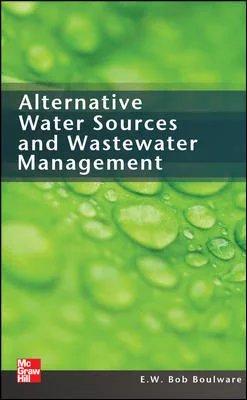NYC Completes Drinking Water System Upgrade Under EPA Order
EPA in 2000 ordered the New York City Department
of Environmental Protection to replace mechanical equipment containing mercury,
lead and polychlorinated biphenyls along the Delaware Aqueduct.
New Yorkers use some 1.2 billion gallons of drinking water every day, so ensuring the quality of that water remains a priority of the U.S. Environmental Protection Agency and city officials alike. For this reason, EPA in 2000 ordered the New York City Department of Environmental Protection to replace mechanical equipment containing mercury, lead and polychlorinated biphenyls (PCBs) along the Delaware Aqueduct. On Feb. 10, 2009, the city completed the replacements, one year before EPA’s February 2010 deadline.
“EPA and the City of New York are committed to protecting the city’s drinking water so everyone who lives and works there has safe and reliable drinking water,” said EPA Acting Regional Administrator George Pavlou. “This precautionary upgrade means New Yorkers can be even more certain that the water flowing out of their taps is of the highest quality.”
Using its authority under federal hazardous waste law, EPA ordered DEP in September 2000 to replace all equipment containing “contaminants of concern,” which included lead, mercury and PCBs. The order focused on 45 mechanical devices used to raise and lower sluice gates that contained mercury and possibly lead and PCBs at four stations along the Delaware Aqueduct, two in Carmel, N.Y., one in North Castle, N.Y., and one in Mt. Pleasant, N.Y. DEP had replaced 15 of the 24 devices at the Mt. Pleasant station prior to EPA’s order.
The flow of water through the Delaware Aqueduct and two reservoirs along the aqueduct is controlled by sluice gates, which are raised and lowered by devices called sluice gate operators. Though the operators contained mercury and possibly lead and PCBs, all of which pose serious health threats, elevated levels of these substances were never detected by monitoring equipment in the water system.
The Delaware water supply system, constructed between 1937 and 1965, originates more than 100 miles north of New York City and consists of four reservoirs, Cannonsville, Neversink, Pepacton and Rondout. The Delaware Aqueduct conveys drinking water from these reservoirs to the city's distribution system, and provides about 50 percent of the city's daily water needs.
For more information on EPA’s New York City watershed protection program, click here.
Source: U.S. Environmental Protection Agency
New Yorkers use some 1.2 billion gallons of drinking water every day, so ensuring the quality of that water remains a priority of the U.S. Environmental Protection Agency and city officials alike. For this reason, EPA in 2000 ordered the New York City Department of Environmental Protection to replace mechanical equipment containing mercury, lead and polychlorinated biphenyls (PCBs) along the Delaware Aqueduct. On Feb. 10, 2009, the city completed the replacements, one year before EPA’s February 2010 deadline.
“EPA and the City of New York are committed to protecting the city’s drinking water so everyone who lives and works there has safe and reliable drinking water,” said EPA Acting Regional Administrator George Pavlou. “This precautionary upgrade means New Yorkers can be even more certain that the water flowing out of their taps is of the highest quality.”
Using its authority under federal hazardous waste law, EPA ordered DEP in September 2000 to replace all equipment containing “contaminants of concern,” which included lead, mercury and PCBs. The order focused on 45 mechanical devices used to raise and lower sluice gates that contained mercury and possibly lead and PCBs at four stations along the Delaware Aqueduct, two in Carmel, N.Y., one in North Castle, N.Y., and one in Mt. Pleasant, N.Y. DEP had replaced 15 of the 24 devices at the Mt. Pleasant station prior to EPA’s order.
The flow of water through the Delaware Aqueduct and two reservoirs along the aqueduct is controlled by sluice gates, which are raised and lowered by devices called sluice gate operators. Though the operators contained mercury and possibly lead and PCBs, all of which pose serious health threats, elevated levels of these substances were never detected by monitoring equipment in the water system.
The Delaware water supply system, constructed between 1937 and 1965, originates more than 100 miles north of New York City and consists of four reservoirs, Cannonsville, Neversink, Pepacton and Rondout. The Delaware Aqueduct conveys drinking water from these reservoirs to the city's distribution system, and provides about 50 percent of the city's daily water needs.
For more information on EPA’s New York City watershed protection program, click here.
Source: U.S. Environmental Protection Agency
Looking for a reprint of this article?
From high-res PDFs to custom plaques, order your copy today!







